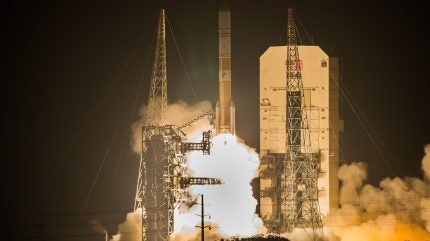
The US Department of Defense (DoD) has confirmed that Russia has placed a satellite thought to have an anti-satellite (ASAT) capability into low-Earth orbit (LEO) into the same orbit as that of a US Government satellite, as the ongoing militarisation of space continues.
With space and LEO becoming increasingly contested and a vital part of a military’s infrastructure through communications and surveillance satellites, the threat of space becoming part of a future conflict is increasing.
In 2007, China conducted an anti-satellite weapon test to destroy one of its own satellites using a kinetic kill vehicle, shattering the platforms and scattering thousands of pieces of debris into new chaotic orbits.
Russia too has tested anti-satellite weapon systems, most recently in 2021 when it destroyed one of its defunct LEO platforms, with the debris cloud worsening the already complex orbital environment around Earth.
In a further indication of the militarily contested nature of LEO, on 21 May 2024, a Pentagon spokesperson confirmed that Russia placed a satellite into the same orbit as a US platform, judging it to have an ASAT capability.
“What I’m tracking here is on May 16… Russia launched a satellite into low Earth orbit that we assess is likely a counter-space weapon presumably capable of attacking other satellites in low Earth orbit,” said the DoD spokesperson.

US Tariffs are shifting - will you react or anticipate?
Don’t let policy changes catch you off guard. Stay proactive with real-time data and expert analysis.
By GlobalData“Russia deployed this new counter-space weapon into the same orbit as a US Government satellite and assessments further indicate characteristics resembling previously deployed counter-space payloads from 2019 and 2022.”
The US DoD spokesperson stated that the Pentagon would “continue to monitor” the situation but did not deny that the Russian platform could be a threat to US assets.
“It’s a counter-space weapon in the same orbit as a US government satellite, so…,” the spokesperson said.
US: Russia developing space-based nuclear capability
In April 2024, Russia also vetoed a UN Security Council Resolution that would call on member states to not deploy weapons of mass destruction – nuclear weapons – into space. Any deployment of nuclear weapons into LEO would have a dramatic impact on the security of space and the diminishing hope that the domain would be excluded from the threats posed on Earth.
In a 6 May, response, US Alternative Representative for Special Political Affairs to the United Nations Robert Wood warned that Russia already had “several conventional anti-satellite weapons” already in orbit, and that Moscow had “repeatedly threatened” satellites for targeting with weapons, including commercial platforms.
“Finally, there is credible information that Russia is developing a new satellite carrying a nuclear device. We have heard [Russian] President [Vladimir] Putin say publicly that Russia has no intention of deploying nuclear weapons in space. If that were the case, Russia would not have vetoed this resolution,” said Wood.
In 2021, Nato altered the wording of Article 5, whereby an attack on one member would provoke an automatic response by all others, to include activities in the space domain. In recent years, Nato or US-allied states have created their own bespoke space command structures to provide more strategic focus on the space domain.


